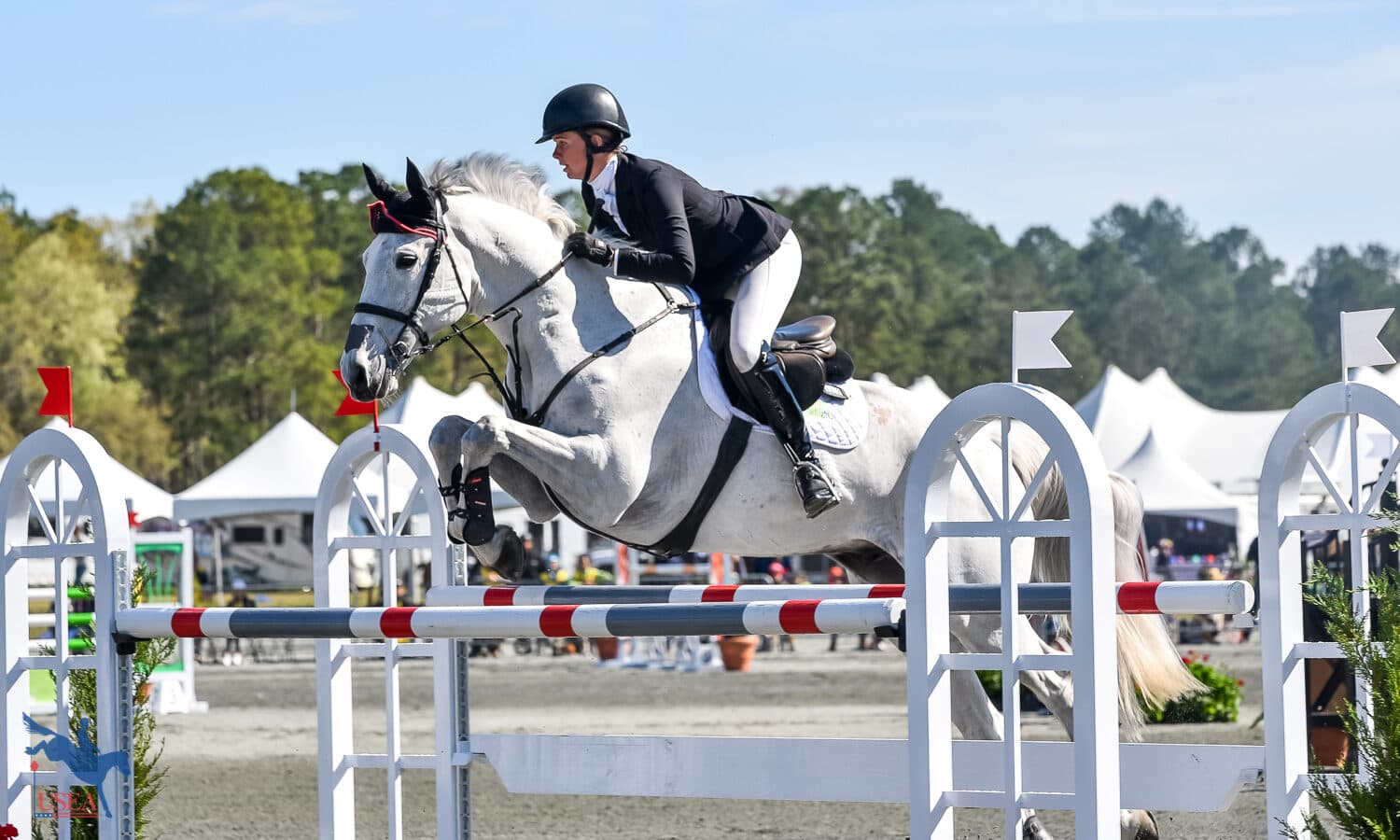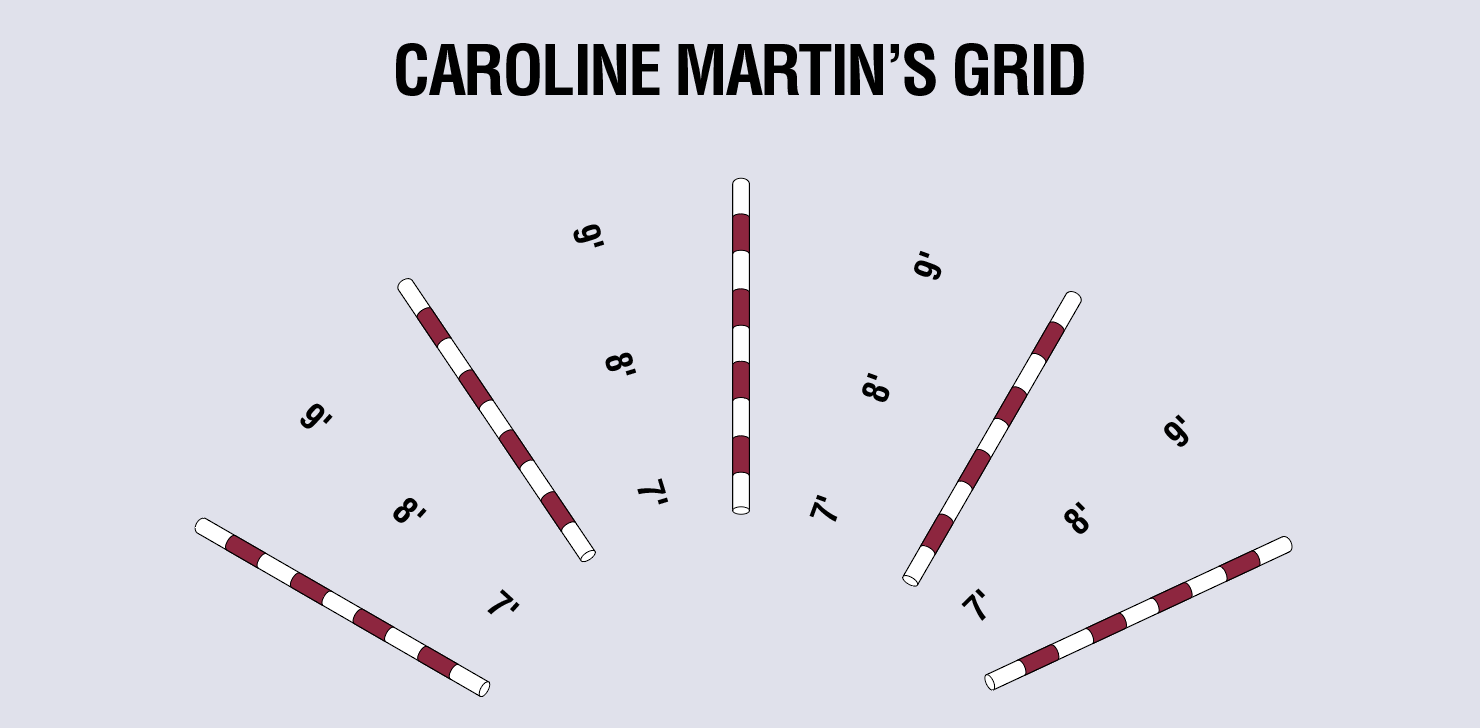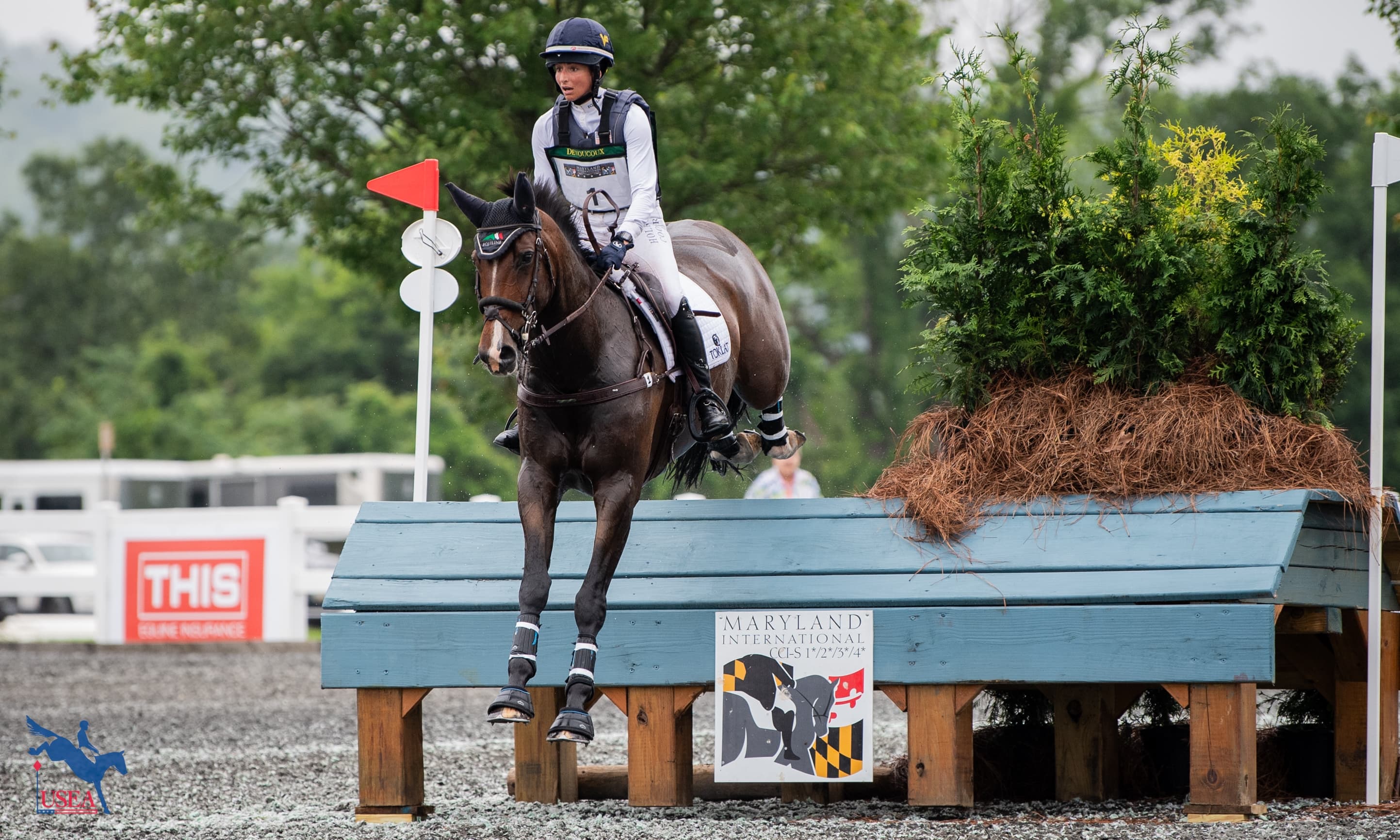Grid Pro Quo with Caroline Martin

Ready to spice up your arena routine this winter training season? In this series, we are revisiting some of our favorite Grid Pro Quo articles from Eventing USA to help you use the off-season to your advantage and keep you and your horse in tip-top shape for when it's time to get back out there. Click here to check out other past Grid Pro Quo exercises!
WHY:
There are many reasons why I love using cavaletti throughout the year, but the main one is that they help you practice seeing your stride without taxing your horse’s legs. Not everyone has the option of jumping several horses a week, so it can be hard to find that balance between being able to practice your jumping enough and not over-jumping your horse. I find that cavaletti work is the perfect answer to this!
This particular set-up is great for horses of every level, and I use it often with every horse in my barn, from the green 4-year-olds to the Advanced campaigners. It not only helps improve their rideability, but also helps to improve their cadence.
Setting up cavaletti on a bending line can be a bit challenging, so don’t be afraid to pull out your measuring tape, enlist the help of a friend, and really take your time. The distances slightly increase from the inside to the outside of the circle so that you can utilize them at the trot and the canter, making this set-up multi-purposeful for your flat ride.
HOW:

Regardless of the age or level of my horse, I always, always walk them through the inside track of the cavalettis a few times to get things started. As soon as my horse is calmly walking through cavaletti on a quiet connection I will start trotting through the center of them. And when I’m ready to introduce the canter, I will stay to the outside, but gradually move them towards the inside to make them work a little harder.
For my lower level horses, my main goal is to try to get the horse to really work over their back and stretch into the cavaletti. I will leave the cavaletti on the ground, and just repeat the exercise until the horse is relaxed enough to really let go while working over the cavaletti. And for my lower level students, I want them to be able to start to feel the cadence in the trot. I will also work with my students to teach them how their body affects their horse by having them post higher and lower and seeing how that changes their horse’s way of going. When it comes to cantering, I am simply looking for the horse and rider to be able to cruise through them while the rider is in a half seat.
As a rider, you’re going to want to practice getting deep to the base of the first cavaletti. This can sometimes make riders feel uncomfortable, but it’s a good thing to practice doing. The key though is to not use your reins to try to find that deep distance, instead sit squarely in the saddle, using your core to control your horse’s length of stride, and let your horse come up to you. Inevitably if you do this, your horse will start to learn that a gappy distance isn’t the way to go.
As my horses and students progress in experience, I will start to raise the cavaletti, and start to incorporate transitions to increase the difficulty of the exercise. The key to making the most of this simple exercise is to keep changing things up. Fit in as many transitions as are appropriate for your horse before and after the cavaletti. And be really strict with yourself about not only where your transitions will be, but where you’re going on the cavaletti. If you want to do a transition every five strides, then do them every five strides - don’t let your horse convince you that you can only do transitions every six, seven, or eight strides.
I also try to stress to my students to really try to set yourself up for success whenever possible. When it comes to these transitions, there are two approaches to creating a successful circle of transitions. The first is to start with a very doable goal for the number of strides between transitions. For green horses or riders, I will often start with 10 strides and go down from there. And again, keep your expectations realistic, so don’t try to go from transitions every 10 strides to transitions every five strides in one training session. Work up to it!
The other approach to setting yourself up for success is to start with walk-halt transitions and then increase the difficulty from there. So once you have the walk-halt transitions mastered, then move on to walk-trot transitions, and so on until you can do halt-walk-trot-canter-trot-walk-halt every four to five strides. Again, this doesn’t have to happen in one training session, but instead can be a goal for yourself for a season.
Another rule to keep in mind is to not let your horse wobble between the rails. Meaning that if you’re aiming for the inside line, don’t let your horse drift out on the circle. This is where using striped cavaletti can come in handy because it helps to give you a visual of where you want to be. This is also when doing this exercise with friends is good because you can help tell the other person if they are drifting one way or the other, as it can sometimes be hard to recognize this when you’re riding.
Being really strict with yourself on things like your transitions and line will only help you when you start jumping. And again, the beauty of practicing this over cavaletti is that you’re keeping your horse’s mind busy, and challenging yourself as a rider, without taxing their bodies too much.
About Caroline Martin
Ever since Caroline Martin won individual gold at the 2014 North American Junior/Young Rider Championships in 2014 on Quantum Solace, she has not looked back. Her experience grew along with her determination to represent the U.S. internationally. She achieved that goal in 2017 when she traveled to Great Britain on the Karen E. Stives European Developing Tour. Martin now has five CCI5*-Ls under her belt and she is expanding her program in Ocala, Florida and Riegelsville, Pennsylvania.














